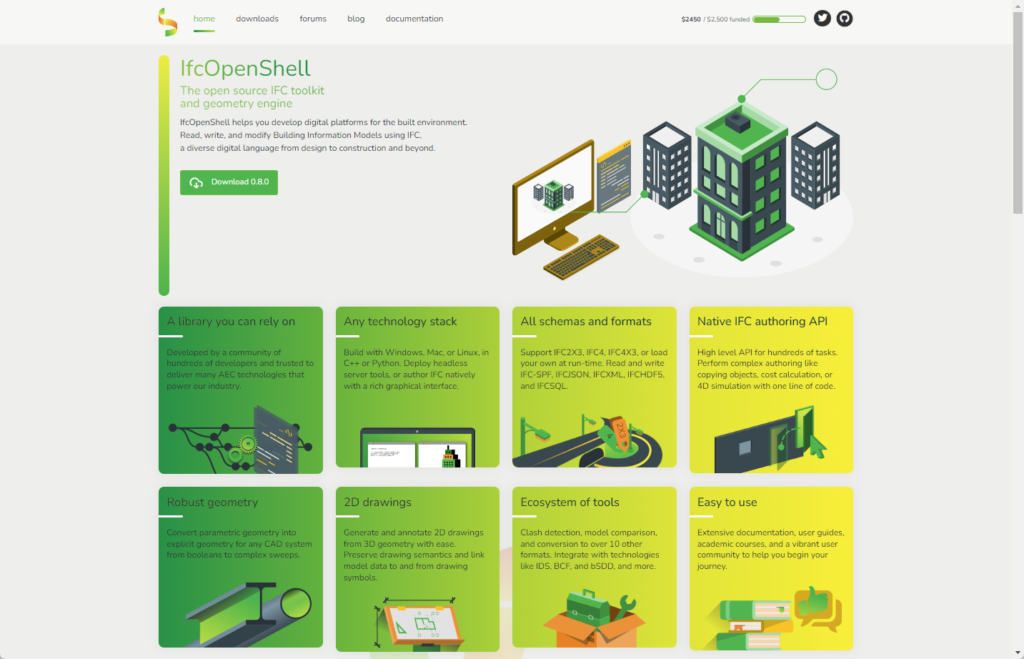If you don’t know about ChatGPT, let me tell you about it. It is a useful application that can answer your questions, give you recipes for tasty cakes, and help you write essays. But it can do even more!
ChatGPT is not just for chatting; it is also used to create code that solves programming problems. Because its algorithms keep getting better, it can write code more accurately and efficiently.
In this article, I will show you how to use ChatGPT to help us create code for modifying IFC (Industry Foundation Classes) files. You will see how ChatGPT can streamline working with this format and speed up task execution.
Let’s dive into the article.
ChatGPT
In the age of digital transformation, more and more tools are leveraging artificial intelligence (AI) to automate tasks and simplify processes. One such tool is ChatGPT, a language model developed by OpenAI that can assist users in generating code and automating programming tasks.
In this article, I will demonstrate how to use ChatGPT to modify IFC files using Python and the ifcOpenShell library. This library enables the manipulation of IFC files, which are a widely used format in the architectural and engineering industries for storing information about building models.
Workflow
Let’s get into the details. Below, I describe step by step how to use ChatGPT to generate and modify Python code that allows for editing IFC files.
Step 1: Creating a Prompt
The first step in using ChatGPT to generate code is preparing a prompt—an instruction that we provide to the language model. The prompt should precisely describe what we want to achieve while remaining concise and clear. It’s advisable not to create overly complex or lengthy prompts. Instead, it’s better to break the task into smaller parts and gradually add more code snippets.
An example prompt for ChatGPT could look like this: “Create Python code that uses the ifcopenshell library to open an IFC file and then modifies the name of a specific building element.”
Step 2: Generating the Code
After creating an appropriate prompt, ChatGPT generates Python code utilizing the ifcOpenShell library. This library is a specialized tool that allows for various manipulations of data within IFC files.
At this stage, the generated code can be relatively simple or more complex, depending on how precisely the requirements were described in the prompts. ChatGPT produces the code according to the given instructions, enabling the user to quickly obtain a functioning script.
Step 3: Using the Code
The generated code should be copied into your programming environment. In this case, I use Google Colab. Before running the code, you need to install the ifcopenshell library using the following command:
pip install ifcopenshell
Next, you need to upload the IFC file that you want to modify.
Step 4: Iteration
If you encounter errors while running the code, the next step is to copy the error messages and input them into ChatGPT for assistance in fixing the code. This approach makes the debugging process much quicker and more efficient, as ChatGPT can suggest corrections to the code or point out errors that need to be addressed.
Additionally, ChatGPT can help with code refactoring, which involves optimizing the code to make it more efficient or easier to maintain.
Step 5: Modifying and Saving the Changed File
Webinar
Summary
In summary, ChatGPT can be an extremely useful tool for supporting work with IFC files. By generating and modifying Python code using the ifcOpenShell library, you can easily automate complex tasks and accelerate the process of creating and editing BIM models.
I encourage you to try out the methods described and watch the recording of the webinar to gain a better understanding of this process step by step.
The post Use AI to manipulate your IFC appeared first on Bim Corner.


